2023-24 AEM Colloquium Series
About
The Department of Aerospace Engineering and Mechanics holds its colloquium on Fridays from 2:30 pm to 3:30 pm. Unless otherwise indicated, all lectures will take place in Rapson Hall 43 this semester. Please note some events may be subject to change.
Seminars will not be held on the following dates:
- 3/8/24
- 4/5/24
- 5/3/24
Upcoming Colloquium
Justin Wilkerson, April 26, 2:30pm
Associate Professor, Mechanical Engineering - Texas A & M University
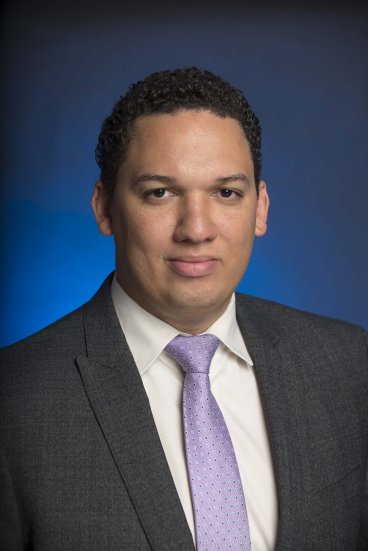
Title: Microstructure-sensitive models for ballistic performance
Abstract: Over the past five decades there has been an intense effort to understand and control the thermomechanical response of materials in extreme environments. A number of technologies critical to our safety and well-being stand to benefit from such understanding including armor and defense systems, next-generation fission and fusion reactors, spacecraft shielding, vehicular crashworthiness, and advanced manufacturing. Materials in such extreme environments often exhibit complex, somewhat non-intuitive mechanical behavior that is difficult to predict with empirical or phenomenological models. Here we discuss our development of a number of multiscale, mechanism-based models that help unravel this inherent complexity. This seminar will focus primarily on the development of an atomistically-informed crystal plasticity framework for deformation and failure of shock compressed single crystals and polycrystals. We further utilize this multiscale modeling framework to provide key insights into the development of reduced-order models, which are helpful in guiding the microstructural design of advanced light-weight armor and shielding materials.
Bio: Professor Wilkerson’s research and teaching interests lie at the interface of solid mechanics, material science, and physics. He is particularly interested in the mechanical behavior of materials under the extreme conditions generated in armor and defense applications, nuclear reactors, hypersonic aircraft, rocket motors, as well as the cores and surfaces of planets and asteroids.
Wilkerson is an associate professor and James J. Cain Faculty Fellow in the J. Mike Walker ’66 Department of Mechanical Engineering at Texas A&M University. Wilkerson spent one year as a visiting Donald D. Harrington Faculty Fellow with the Department of Aerospace Engineering and Engineering Mechanics at the University of Texas at Austin. Prior to that, he was an assistant professor in the Department of Mechanical Engineering at the University of Texas at San Antonio. Wilkerson obtained his B.S. in Aerospace Engineering from Texas A&M, followed by an M.S.E and Ph.D. in Mechanical Engineering from Johns Hopkins University.
Wilkerson’s academic achievements have been recognized and supported by a number of honors and awards, including the NSF CAREER Award, AFOSR Young Investigator (YIP) Award, the Ralph E. Powe Junior Faculty Award, a Haythornwaite Foundation Research Initiation Award, and the Ammon S. Andes Award.
Earlier Colloquium
January 19
There will not be a seminar on Friday, Jan. 19th.
Sayan Biswas, January 26, 2:30pm
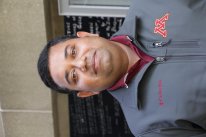
Assistant Professor, Mechanical Engineering - University of Minnesota
Title: Plasma in Energy Research
Abstract: Plasma Power Propulsion Laboratory (3P Lab) explores the enormous potential of plasmas, especially low-temperature plasmas, towards clean energy production, high-efficiency propulsion, and cleaner transportation. Plasma – ionized gases comprised of ions, electrons, excited species, etc., holds the key to our future energy and environment. Even though plasma research existed for more than a century, the recent technological innovations in power electronics and advanced manufacturing have opened the door to a new world for energy researchers. 3P Lab uses low-temperature, non-thermal plasmas as a tool to access unconventional pathways to produceenergy that is inaccessible to conventional energy systems.
In this talk, Biswas will elucidate the utilization of plasmas in energy and propulsion, touching upon
various applications. These include: a) plasma-assisted chemical reforming of hydrocarbon fuels for
cleaner combustion and control of combustion instability, b) the impact of plasma discharge on the
breakup of a liquid jet in supersonic crossflow, c) laser-induced plasma and air shock from energetic
materials to develop tailored innovative solid energetic propellants. The talk will conclude by
exploring ideas on how plasmas can play an important role in supersonic aviation and reaction
control processes.
Bio: Dr. Sayan Biswas is an Assistant Professor in Mechanical Engineering at the University of
Minnesota Twin Cities. Previously, he was a postdoctoral researcher at Sandia National Laboratories’
Combustion Research Facility. Sayan earned a Ph.D. in Aerospace Engineering from Purdue
University in 2017. He received masters from the University of Connecticut in 2012 and bachelors
from Jadavpur University, India, in 2010, both in Mechanical Engineering. At the University of
Minnesota, Sayan leads Plasma Power Propulsion Laboratory – 3P Lab, developing innovative and sustainable technologies for clean and efficient future energy. His research utilizes low-temperature plasmas in next generation of engines, discovers carbon-neutral E-fuels for aviation and transportation, and studies the fundamentals of high-speed propulsion.
Thea Feyereisen, February 2, 2:30pm
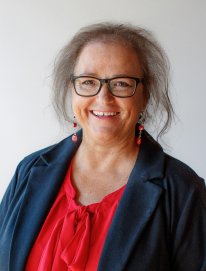
Sr. Fellow, Human Factors, Honeywell Aerospace Technologies
Title: Designing Flight Deck Displays
Abstract: Cross-discipline teams and iterative design are key to innovations that improve safety and efficiency on the flight deck. The talk will discuss the R&D leading to two new flight deck features: Synthetic Vision Systems (SVS) and Runway Overrun Awareness Alerting Systems (ROAAS); and one yet to be certified: Runway Traffic Surface Alerting (Surf-A). Limitations and opportunities for technology introduction that improve operation efficiency and safety on the flight deck will be discussed.
Nicholaus Parziale, February 9, 2:30pm
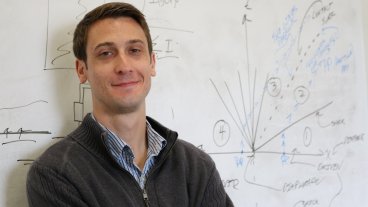
Associate Professor, Charles V. Schaefer, Jr. School of Engineering and Science - Department of Mechanical Engineering, Stevens Institute of Technology
Title: Hypersonic Turbulence Measurement and Observations of Drop Aerobreakup and Impact
Abstract: Reacting/high-speed flow investigation with non-intrusive optical techniques permits researchers to probe fluid flows in harsh or otherwise previously inaccessible environments. New insight into the flow physics of the problems in supersonic and hypersonic flows can be had with the clever application of recent advances in laser, camera, and electronics technologies. In this talk, two examples of such efforts will be discussed. First, new data on hypersonic turbulence with tagging velocimetry will be presented. Then, new drop aerobreakup and impact data pertaining to the multiphase flow in high-speed-vehicle/weather interactions will be presented.
Diane Davis, February 16, 2:30pm
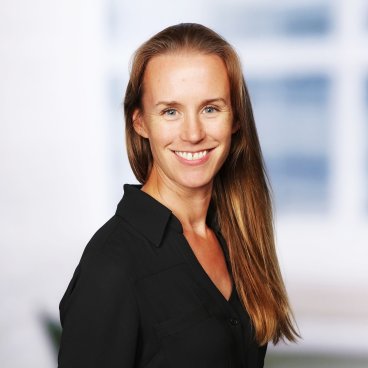
Mission Design Lead for Gateway Systems Engineering and Integration
Title: Jettison and Disposal from the Lunar Gateway
Abstract: The Gateway at the Moon will be the next human outpost in space: a proving ground for deep space technologies and a staging location for missions to the lunar surface and beyond. With crew visits every year, the Gateway will be constructed over time as various components arrive with Orion or are sent independently without crew presence. Naturally, spacecraft and objects of various descriptions will also depart the Gateway for other destinations. Examples include Orion carrying the crew back to Earth, cubesats deployed to locations in cislunar space, discarded logistics modules or lunar landers headed to heliocentric space, and the Gateway itself when its lifetime is complete. Each departing object must depart the vicinity of the Moon without risking collision with the Gateway or other spacecraft in the vicinity, and it must be delivered safely to its selected destination despite unavoidable operational errors and uncertainties. Each departure is governed by the dynamics of the Gateway orbit and the cislunar environment.
The Gateway orbit is a southern 9:2 Near Rectilinear Halo Orbit (NRHO) near the Moon. This NRHO is nearly
stable, but over time, any unmaintained object in this orbit departs due to small instabilities. A jettison maneuver
speeds the departure from the NRHO, but the effects of the maneuver on the spacecraft behavior depend on the
location, magnitude, and direction of the burn. The chaotic nature of the dynamics in cislunar space complicates the selection of a jettison maneuver to achieve a desired final destination. In this presentation, the challenges associated with deployment from the Gateway are discussed, and visual methods are used to overcome these difficulties and successfully design safe, effective departure trajectories from the Gateway halo orbit.
Bio: Dr. Diane Davis is the Mission Design lead for the Gateway Program at Johnson Space Center. She has a BS in Physics from Texas A&M University, an MS in Astrodynamics from the University of Texas at Austin, and a PhD in multibody astrodynamics from Purdue University. Previously, Diane worked in the inner planet navigation group at JPL and for mission control ground system development at JSC. Her research focuses on orbit maintenance and dynamics of departing flow in Near Rectilinear Halo Orbits. Diane is a member of the American Astronautical Society Spaceflight Mechanics Committee and the International Astronautical Federation Astrodynamics Committee, and she is an AIAA Associate Fellow.
***CANCELLED***
Raul Radovitzky, February 23, 2:30pm
Professor, Department of Aeronautics and Astronautics Associate Director, Institute for Soldier Nanotechnologies, Massachusetts Institute of Technology
Title: A unified framework for large-scale simulation of the thermo-chemo-mechanical response of Thermal Protection systems in hypersonic environments
Abstract: I will present a thermo-chemo-mechanics computational framework for the analysis of material and structural degradation and failure resulting from extreme conditions encountered in hypersonic flight. The
approach is based on a unified discontinuous-Galerkin finite-element formulation of the coupled equations describing the solid mechanics, heat transfer, mass transport, and chemical reaction problem. The resulting computational framework supports general models of thermo-chemical reactive transport (convection, diffusion, oxidation, pyrolysis), thermo-chemically-induced mechanical stresses and material fracture, and thermal and chemical diffusion resistance across crack surfaces, as well as surface ablation. We demonstrate the versatility of the computational framework with simulations of: 1) pyrolysis and ablation of Phenolic- Impregnated Carbon Ablator (PICA) material, resulting in thermo-chemically induced mechanical stresses and surface recession, 2) thermally-induced oxidation, growth, and swelling stresses leading to fracture of silicon carbide.
Dr. Jack Berkery, March 1, 2:30 pm
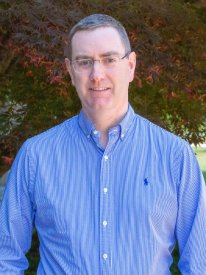
Deputy Director, NSTX-U Research Program, Princeton Plasma Physics Laboratory - U.S. Department of Energy
Title: The National Spherical Torus Experiment Upgrade – Advancing the Physics of Fusion Energy
Abstract: The National Spherical Torus Experiment (NSTX) at the Princeton Plasma Physics Laboratory has provided much of the physics basis for the spherical tokamak (ST) magnetic plasma confinement concept for fusion energy production; concepts which are currently being designed for future fusion pilot plants. NSTX is currently in the midst of an upgrade, and researchers are continuing to advance the physics understanding of ST plasmas to maximize the benefit that will be gained when the upgraded device (NSTX-U) returns to operation and to increase confidence in projections to future devices. STs have certain advantages: their more compact size (than conventional tokamaks) means they can provide higher plasma current more economically. Their low aspect ratio, of minor to major radius, improves stability with favorable average magnetic curvature, enabling high beta (the ratio of plasma pressure to magnetic pressure). There are challenges as well: managing high heat flux, and start-up and sustainment of the plasma without space for an induction coil. The objectives of NSTX-U research are to: (i) to extend particle confinement physics of low aspect ratio, high beta plasmas to the lower particle collisionality levels relevant to future device regimes, (ii) to develop stable, non-inductive scenarios with the self-generated current needed for steady-state operation, and (iii) to develop power and particle handling techniques to optimize plasma exhaust in high performance scenarios.
Christoph Brehm, March 15, 2:30pm
Associate Professor, Department of Aerospace Engineering - University of Maryland
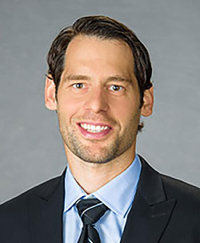
Title: A brief history of the Immersed Boundary Method - From blood flow to high Reynolds number aerospace applications
Abstract: Since its inception in the early 1970s, the Immersed Boundary Method (IBM), initially introduced by Peskin to analyze blood flow in the heart, has evolved significantly, spawning thousands of studies across diverse applications. Originally designed to eliminate the time-consuming grid generation process and facilitate fluid-structure interaction simulations, IBM was initially perceived as a niche computational fluid dynamics (CFD) technique, best suited for low Reynolds number or “inviscid” flow scenarios. However, recent advancements have vastly expanded its applicability. This presentation traces the evolution of the IBM from its pioneering days to its current status, initially highlighting the development of advanced numerical schemes to improve the accuracy and stability characteristics of this method. The recent integration with Wall-Modeled Large Eddy Simulation (WMLES) and leveraging of modern compute platforms have further extended its applicability to high Reynolds number flow scenarios pertinent to aerospace applications. Drawing on 15 years of firsthand experience, from blood flow simulations to aerospace applications including rocket launches, the presenter will demonstrate IBM's impact on the field. The discussion will conclude with an assessment of IBM's readiness for industrial aerospace applications and an overview of remaining challenges. This journey through IBM's history and advancements underscores its transformation into a vital tool for complex flow simulations.
Bio: Dr. Brehm is an Associate Professor in the Aerospace Engineering Department of the University of Maryland. Previously, he was employed at the University of Kentucky (2012-2016) and before that he was a senior research scientist for the Science Technology Corporation at the Advanced Supercomputing Division at NASA Ames Research Center from 2012 to 2016. He was one of the main developers of the Launch Ascent and Vehicle Aerodynamics (LAVA) solver framework and employed LAVA to study a wide range of unsteady fluid dynamics problems, such as rocket launch site, contra-rotating open rotor, jet impingement, etc. His current research is at the intersection of fundamental numerical methods development and large-scale multi-physics applications. His most recent research efforts have focused on simulating and analyzing transitional and turbulent flows in low and high-speed regimes for fundamental studies in laminar-turbulent transition, turbulence, relaminarization, acoustics, and fluid-structure interaction.
Mukul Kumar, March 22, 2:30pm

Lawrence Livermore National Laboratory
Title: Assessing the design space for architected materials in extreme loading scenarios
Abstract: Owing to the tunability of mechanical response for structural applications, additively manufactured lattice structures are increasingly being studied to elucidate their response to static and dynamic loads. However, these roles are typically in opposition: static loads must be supported sufficiently far away from the onset of buckling or yielding, whereas dynamic loads are typically ameliorated by crushing of the lattice, which provides excellent energy-absorption due to the large plastic deformation accompanying densification. Moreover, emergent behavior, such as material jetting and elastic wave propagation, arising from the open architecture has been observed in situ under dynamic loading conditions. In this work we will outline a design scheme for lattice structures that must simultaneously support static loads while enduring high- amplitude impulsive loads. For a class of impulse shapes associated with laser-based shock compression, our key findings show that the static and dynamic responses of the lattice can be uncoupled and linked by a strength model that accounts for variability in the additive manufacturing process. Moreover, costly global search optimization can be replaced by sequential one-dimensional optimization following the direction of the wave propagating through the lattice. The design rules developed in this study expand the domain of applicability of lattice structures to challenging dual-loading regimes spanning decades of strain rates.
Bio: MUKUL KUMAR is a Distinguished Member of Technical Staff at Lawrence Livermore National Laboratory. Since joining LLNL in 1998 he has worked in the emerging areas of grain boundary engineering and orientation microscopy. He and his colleagues developed the concept of grain boundary network crystallography and its influence on fracture behavior in extreme environments. The seminal publications on grain boundary properties and long-range crystallographic correlations in materials microstructure are some of the most cited in the field. Concurrently, Mukul‘s research significantly improved our understanding of how microstructure influences dynamic failure and fracture, critical to defense applications design. The work of his team using in situ x-ray imaging methods has opened new avenues in our understanding of the dynamic compression response of architected materials and composites. He is currently a principal investigator on multiple weapons physics related projects and affiliated with the Institute for Shock Physics at Washington State University as an adjunct professor.
Ognjen Ilic, March 29, 2:30pm
Assistant Professor, Mechanical Engineering, Graduate Faculty Member: Electrical and Computer Engineering, School of Physics and Astronomy, University of Minnesota
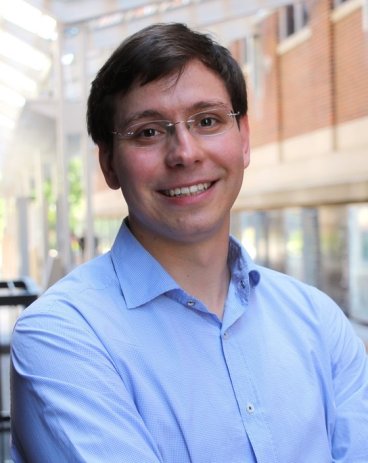
Title: Manipulating the Energy and the Momentum of Waves at the Subwavelength Scale
Abstract: The transport of waves, such as light and sound, can be radically transformed when waves interact with metamaterial structures with engineered subwavelength features. My group focuses on understanding and developing electromagnetic and acoustic metamaterials to manipulate wave-matter interactions in ways not possible with conventional materials. I will discuss two examples from our work. First, we develop adaptive photonic metamaterials that can control emission and absorption of light for applications in spectral camouflage and space thermal management. Second, we explore how metamaterials can steer the momentum of waves to move objects without contact. This versatile concept enables new actuation functions, from ultrasonic guiding and tractor beaming to macroscale optical levitation and long-range actuation. These concepts could bring about ultralightweight and multi-functional structures and coatings with unique new terrestrial and space applications.
Bio: Ognjen Ilic is a Benjamin Mayhugh Assistant Professor of Mechanical Engineering at the University of Minnesota, Twin Cities. He completed his Ph.D. in physics at MIT and was a postdoctoral scholar in applied physics and materials science at Caltech. His research themes encompass light-matter and wave-matter interactions in nanoscale and metamaterial structures. He received the Air Force Office of Scientific Research (AFOSR) Young Investigator Award, the 3M Non-Tenured Faculty Award, the Bulletin Prize of the Materials Research Society, and a University of Minnesota McKnight Land-Grant Professorship. He holds courtesy appointments in the Department of Electrical and Computer Engineering and the School of Physics and Astronomy at the University of Minnesota.
Dan Henningson - MMS, April 12, 2:30pm
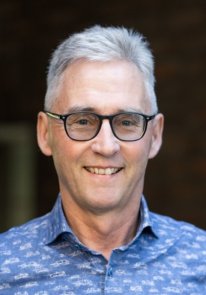
Professor, KTH Royal Institute of Technology
Title: Large-scale numerical experiments of unsteady aerodynamic flows and the role of laminar-turbulent transition
Abstract: Fluid flows subject to time-dependent external forces or boundary conditions are ubiquitous in aeronautical applications. Whether one considers pitching wings, dynamic stall or the gust response of wind turbines, the flow is unsteady or non-autonomous. We investigate the influence of unsteadiness on the non-linear flow evolution, as well as on the linear response to small disturbances that determines their stability and the subsequent transition to turbulence. The simulations are performed with a high-order spectral-element method (SEM) with the domain discretized by up to several billion grid points. The capabilities of our SEM solvers are presented and two flow cases are studied in more detail. First, a small amplitude pitching wing where the laminar-turbulent interface drastically changes its cordwise location, and subsequently the dynamic stall of an airfoil undergoing a large pitchup motion.
We assess the potential of the optimally time-dependent (OTD) framework for transient linear stability
analysis of flows with arbitrary time-dependence using a localized linear/non-linear implementation.
This framework is first tried on oscillating plane Poiseuille flow to show the potential of the method
and subsequently used to track the linear stability of laminar separation bubbles on unsteady wings.
For the pitching case the global mode corresponding to an absolute local instability is identified at the
rear of the separation bubble, causing its breakdown to turbulence.
Bio: Dan Henningson is Professor of Fluid Mechanics at KTH Royal Institute of Technology since 1999, where he also obtained his PhD in 1988. Earlier he held positions as Assistant Professor of Applied Mathematics at MIT and as Senior Researcher at the Aeronautical Research Institute of Sweden. At present he is also holding an Endowed Professor Chair at Instituto Tecnológico de Aeronáutica, Brazil, in Honor of Peter Wallenberg Sr. Professor Henningson has made contributions to the areas of large-scale numerical simulation of laminar turbulent transition and its control, in particular so-called bypass transition in boundary layers under free stream turbulence, and more recently in the area of unsteady aerodynamics flows. His early theoretical work is summarized in the highly cited Springer monograph, Stability and Transition in Shear Flows, where the work on transient growth and non-normal effects in the laminar-turbulent transition process was highlighted. Professor Henningson has been instrumental in creating a number of excellent research environments, in particular as the
founding Director of the Linné FLOW Center, the Swedish e-Science Research Center and the Swedish Aerospace Research Center. Professor Henningson is the recipient of the prestigious Humbolt Prize and a European Research Council Advanced Grant. He is also an American Physical Society and EUROMECH Fellow as well as a member of the Royal Swedish Academy of Engineering Sciences.
Lauren Konitzer, April 19, 2:30pm
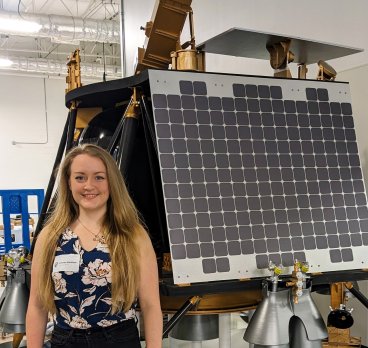
NASA Goddard Space Flight Center
Title: Lunar Navigation Using GNSS Signals: The LuGRE Mission to the Moon
Abstract: NASA’s 2020 Artemis Plan specifically names GPS-based navigation as a means for meeting the unique needs of lunar explorers in the near future. GNSS is deliberately highlighted because while future lunar missions will surely utilize a multi-faceted lunar-based navigation framework, users can already obtain precise position, navigation, and timing (PNT) services with relatively low burden to size, weight, power, and cost by leveraging the existing and well-proven GNSS architecture around the Earth.
However, flight demonstrations are crucial for proving the feasibility of cislunar GNSS and laying the groundwork for future development of cislunar PNT technology. In order to achieve this goal, the Lunar GNSS Receiver Experiment (LuGRE) was conceived as a joint NASA-Italian Space Agency flight demonstration payload. LuGRE will fly onboard the Firefly Blue Ghost Mission 1 (BGM1) lunar lander to demonstrate multi-GNSS based position, navigation, and timing (PNT) in cislunar space and at the Moon. Launching in 2024, the LuGRE mission aims to receive GPS and Galileo signals at the Moon to characterize the lunar GNSS signal environment, demonstrate navigation and time estimation, and utilize collected data to support development of GNSS receivers specific to lunar use.
Bio: Lauren Konitzer obtained a Bachelors in Physics and a Bachelor in Aerospace Engineering and Mechanics in 2017, and a Masters in Aerospace Engineering and Mechanics in 2019, all at the University of Minnesota - Twin Cities. Lauren is now a Navigation and Mission Design engineer at NASA Goddard Space Flight Center. She is the deputy principal investigator for the Lunar GNSS Receiver Experiment launching to the moon in 2024, and a flight dynamics analyst for the Roman Space Telescope, launching to Sun-Earth L2 in 2026.